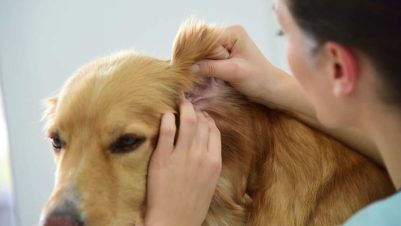THE headline “Home visits only if ‘clinically justified’…” in July’s Veterinary Practice took me back 35 years to wonderful days seeing practice (as we then called it) in Solihull with John Heath.
It was John who, with his infectious enthusiasm for eyes, pushed me in the direction of veterinary ophthalmology, but I learnt so much more from him as well, about veterinary practice and client communication, just by working with him, without a Cambridge-Calgary consultation model ever even being mentioned!
Mr Heath would spend his morning in a tiny room filled with ophthalmic instrumentation consulting, 5% of which time John would say was spent coming to a diagnosis and 95% chatting to the owner about Warwickshire county cricket or antiques or cars or whatever took his or the owner’s fancy that day.
Such, he assured me, was the art and science of veterinary medicine. The science was coming to the diagnosis which for most cases should be a relatively short process. The art was separating the client from his or her cash!
Of course this was meant merely in jest – actually it was those extended conversations with the owners that showed that Mr Heath was concerned not just with the ill pet but with what we would now understand as the animal-owner bond.
He was treating much more than just a sick animal but the worried owner as well. And not just a customer or client, one who receives services on payment of a fee, but often someone who had become a friend over the years of bringing an animal to the practice.
This meant that a consultation could not be constrained to a mere five or 10 minutes if more was needed. I wonder if somehow we have forgotten that in today’s computer co-ordinated world providing a service means getting a diagnosis, giving a treatment and then on to the next case.
After a morning of consultations, it was on to the operating theatre for surgery before a quick bite of lunch if we were lucky. And then the afternoon was spent in home visits. Some certainly “clinically justified” for sure, but many because the owners had difficulty getting to the practice and a consultation over a cup of tea in their home was preferable for both client and veterinary surgeon.
Of course, seeing the animal in its own environment gives a very different impression compared to the situation in the consulting room. There the vet has the upper hand and the patient is on the back foot, if you will excuse me mixing appendagial metaphors.
When visiting the animal’s home, it is we who are straying onto their territory and that can give quite a different view of the behaviour of the animal…and the owner too! Truth be told there are problems – taking a blood sample, attempting a full clinical examination, perhaps most particularly performing a euthanasia – are all a lot more complicated in a home than in the consulting room where everything is to hand.
Each of those situations, perhaps particularly with the euthanasia, involves the owners in so much deeper a sense when in their own home. Home visits not just undertaken when “clinically justified”.
The same might be said about out-of-hours services. Let me tell you of another veterinary surgeon who is one of my heroes quite as much as was John Heath. Dennis (not his real name to avoid embarrassing him!) works out of the extended and very well equipped modified garage next to his house and is very much the vet for his village.
Imagine you are an elderly lady whose dog is still coughing at midnight, as he has been for the last few days on and off, and you can’t get to sleep for worrying about him quite as much as being kept awake by the continual hacking.
A corporate practice will happily see you and little Scruffy of course, if you can get to them, for a considerable fee. But what you really need is someone to come round, chat to you, examine your dog, give him an anti-tussive if that is what is needed and arrange to see him tomorrow morning. And that is what Dennis is happy to do.
Now I must admit that as an ophthalmologist, emergencies are less common for me than they are in general practice. But the dog referred on a Sunday lunchtime because the owner is worried that the eye is swelling is the very reason I am a vet. We have all promised that my “constant endeavour will be to ensure the welfare of animals committed to my care”. OK, so I had to hang around the vet school all afternoon as they got lost coming to us, and in the end the dog didn’t have the glaucoma we thought she might have. But to put the owner’s mind at rest and ensure that neither pain nor blindness was just around the corner is well worth a Sunday afternoon spent at the clinic, to my mind.
The call that reaches me on Saturday morning while I am standing in the checkout queue at Tesco telling me of a suspected lens luxation on its way in for evaluation and probable surgery still fills me with excitement rather than dread. That’s the sort of stimulation Saturday afternoons were made for!
You might ask me where my work-life balance is, but if you can enjoy those out-of-hours calls and feel buoyed up after many if not most of them, maybe that’s a pretty good balance. Call me crazy but, as I tell the school students who come round to see practice with me, there can’t be much better a job than enjoying yourself, helping animals and their owners, and getting paid for it at the same time. How lucky we are to be in such a wonderful profession!







